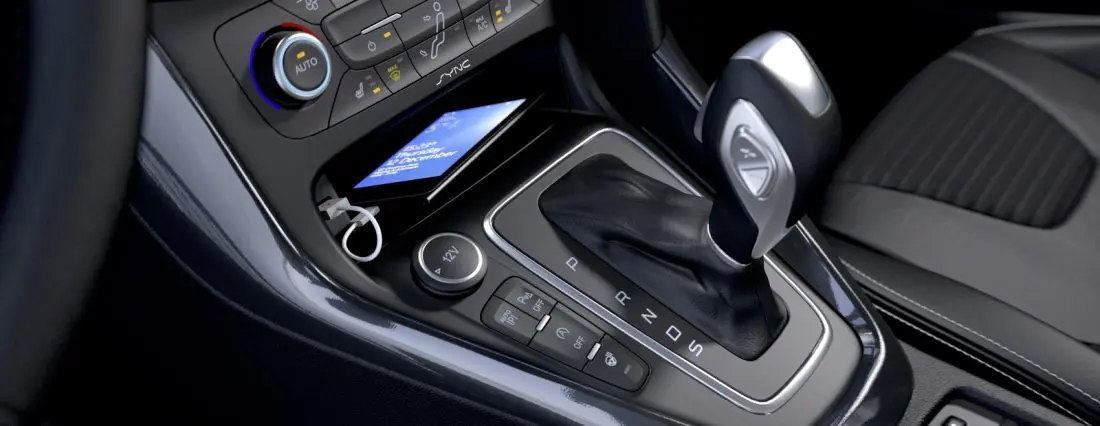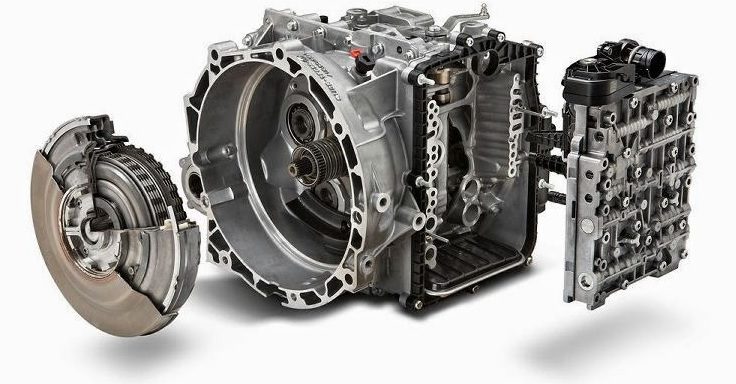
The structure and principle of operation of the Powershift transmission
Content
To improve driving comfort, car manufacturers are developing various systems. Among other things, a lot of attention is paid to the transmission. Today, various concerns have developed a large number of automatic transmissions. The list includes a variator, a robot, and an automatic machine (for more details about what modifications the transmission can have, it is described in another article). In 2010, Ford introduced a new automatic transmission unit to the market, which it called Powershift.
Just two years after the start of production of this gearbox, customers of new car models began to receive complaints about the inadequate operation of the mechanism. Without going into details, the negative feedback from many users was that the gearbox operation was often accompanied by slippage, slow gear shifting, jerking, overheating and rapid wear of device elements. Sometimes there were messages about spontaneous gear shifting and car acceleration, which provoked accidents.
Let's consider what is the peculiarity of this gearbox, on what principle does it work, what modifications are there, and most importantly - is everything really so sad that you need to stay away from this transmission?
What is Powershift Box
The robotic version of the gearbox from the American brand was installed in the penultimate generation Focus (for the American market), as well as in the latest generation of this model (offered for the CIS market). Some of the power plants of the Ford Fiesta, which is still present in dealerships, as well as other car models or their foreign counterparts, are also aggregated with such a transmission.
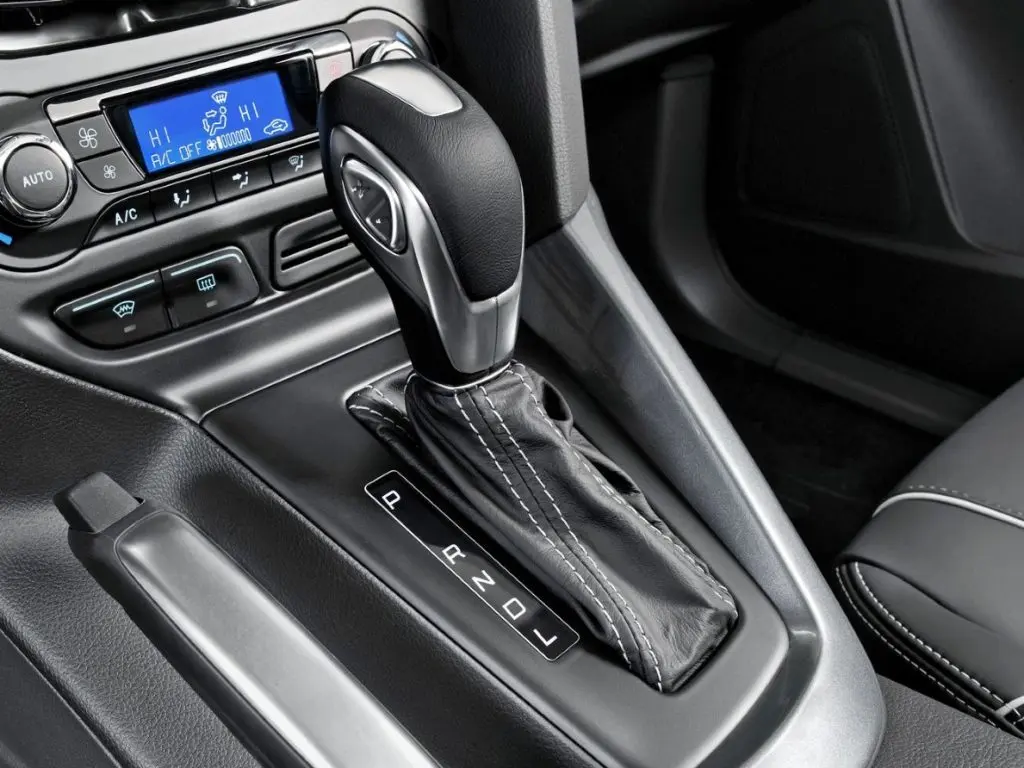
This gearbox was especially actively installed on cars with a "blue oval", which were produced during the 2012-2017 years. The automaker has made adjustments to the design of the manual transmission many times, and in order to assure buyers of the reliability of the product, it has increased the warranty for two years (from 5 to 7) or for those who travel a lot, from 96.5 to 160.9 thousand kilometers.
Despite this, many customers remain dissatisfied with this transmission. Of course, this situation has significantly reduced the sales of cars with this box. And there is no question of selling a car on the secondary market - if few people decide to buy a new car with a robotic transmission of the DPS6 type, then you can not even dream of selling a used vehicle with such a complete set, although there are similar options on some sites.
Powershift is a preselective robotic transmission. That is, it is equipped with a double clutch basket and two sets of gear mechanisms that provide a quick transition between speeds. Switching to such a gearbox occurs according to the same principle as inside the mechanics, only the whole process is controlled not by the driver, but by the electronics.
Another well-known DSG transmission developed by the specialists of the VAG concern has a similar principle of operation (in detail about what it is, it is described in a separate review). This development is designed to embody the advantages that mechanical and automatic transmissions have. Another brand that Powershift uses is Volvo. According to the manufacturer, this manual transmission is ideal for diesel engines of high power and high torque at low revs.
Powershift device
The Powershift manual transmission device includes two main drive gears. An individual clutch is used for each of them. For this reason, the box unit is equipped with two input shafts. Another design feature is that one of the drive shafts is located inside the other. This arrangement provides a smaller module size if these mechanisms were in different planes.
The outer shaft is responsible for shifting an even number of gears and engages reverse. The inner shaft is also called the "center" shaft and drives every odd gear to rotate. The photo below shows a diagram of this design:
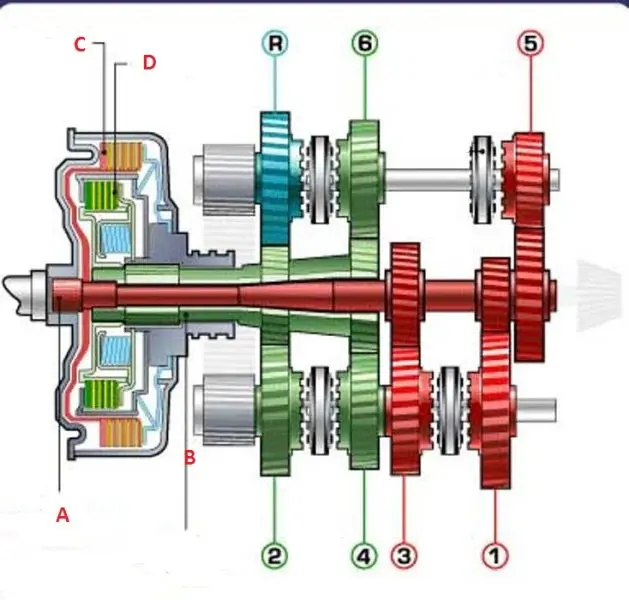
Despite the fact that Powershift is of the automatic type, there is no torque converter in its design. Also, the manual transmission device does not have a planetary gear and friction clutches. Thanks to this, the operation of the transmission does not consume the power of the power unit, as with the operation of a classic torque converter. At the same time, the motor loses much less torque. This is the main advantage of the robot.
A separate electronic control unit (TCM) is used to control the transition from low speed to high speed and vice versa. It is installed on the box body itself. Also, the electronic circuit of the unit includes several sensors, but in addition to the signals from them, the control unit also collects information from other sensors (motor load, throttle position, wheel speed, etc., depending on the car model and the systems that are installed in it ). Based on these signals, the transmission microprocessor independently determines which mode to activate.
The electronics use the same information to adjust the clutch and determine when to change gear. Electric motors act as actuators in this design. They move the clutch discs and drive shafts.
The principle of operation of the manual transmission Powershift
Powershift manual transmission will work according to the following principle. The double type of clutch in the device of the unit is needed in order to minimize the transition time from one speed to another. The logic is as follows. The driver moves the gearbox selector lever to position from P to D. The automatic system releases the clutch of the central shaft and, using an electric motor, connects the gears of the first gear to the drive shaft. The clutch is released and the car starts to move.
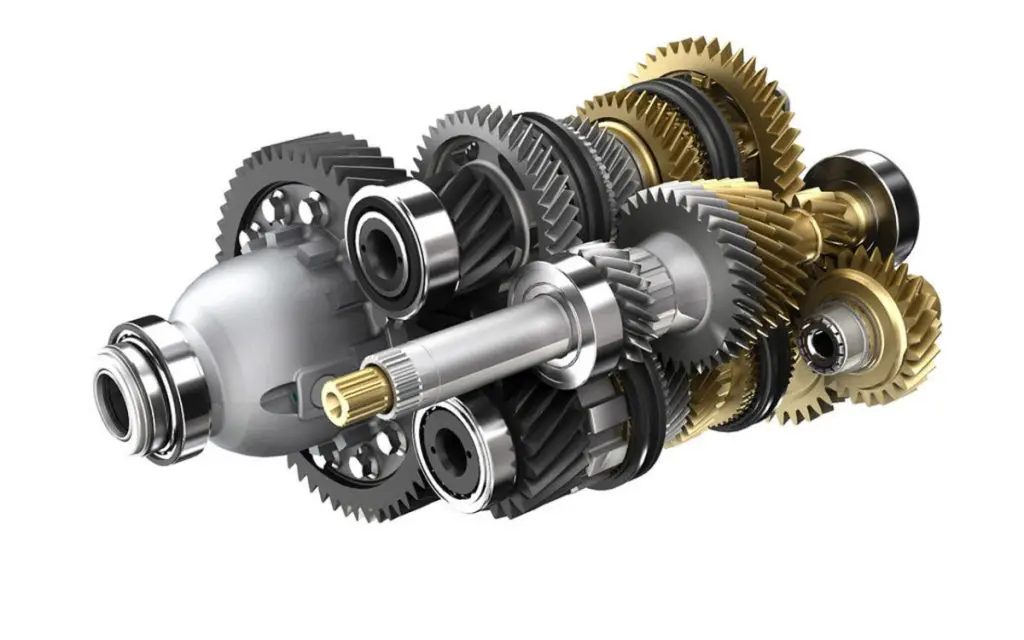
The transmission control unit detects the increase in engine speed, and on the basis of this, the second gear is prepared (the corresponding gear is moved to the outer shaft). As soon as the algorithm that sends a signal to increase speed is triggered, the first clutch is released, and the second is connected to the flywheel (for details on what kind of part it is, read here). The gearshift times are almost imperceptible, so the car does not lose dynamics, and the flow of torque is supplied to the drive shaft continuously.
The automaker has provided the ability to switch in the so-called manual mode. This is when the driver himself determines at what point the box should go to the next speed. This mode is especially useful when driving on long slopes or in traffic jams. To increase the speed, move the lever forward, and to decrease it, move it back. The paddle shifters are used as an advanced alternative (in models with sporty performance). A similar principle has a Tip-Tronic type box (for how it works, read in another article). In other situations, the box is controlled in automatic mode. Depending on the model, the auto gearbox selector is equipped with cruise control positions (when the transmission does not shift above a certain gear).
Among the developments of the American automaker, there are two modifications of Powershift preselective robots. One works with a dry clutch and the other with a wet clutch. Let's consider what is the difference between these types of boxes.
Working principle of Powershift with dry clutch
The dry clutch in a Powershift transmission works in the same way as in conventional mechanics. The friction disc is strongly pressed against the flywheel surface. Through this link, the torque is transmitted from the crankshaft to the drive shaft of the final drive. There is no oil in this arrangement as it prevents dry friction between parts.
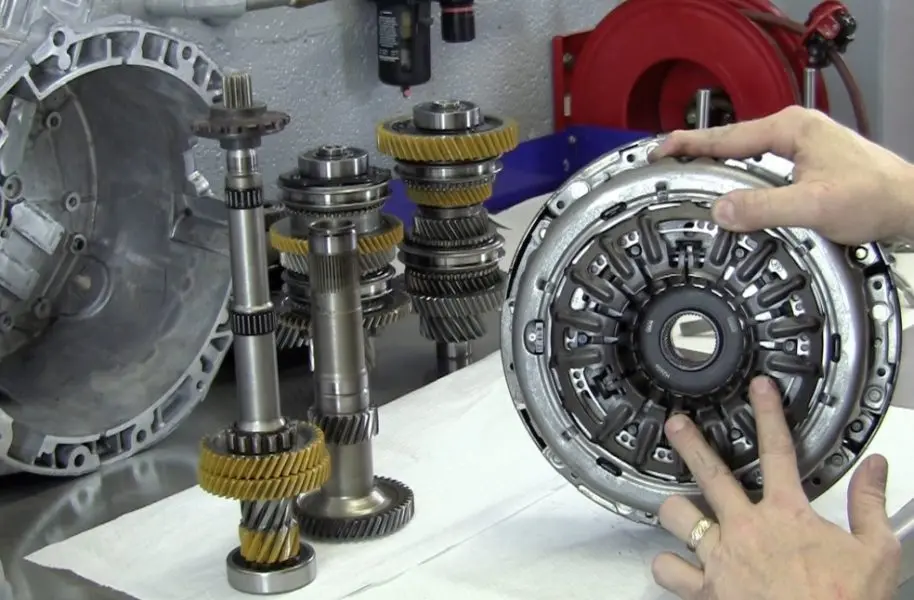
This design of the clutch basket has long established itself as an efficient use of engine power (this is especially noticeable in the case of a bundle with a low-power engine, in which every horsepower counts).
The disadvantage of this modification is that the node tends to get very hot, as a result of which its service is reduced. Recall that it is difficult for electronics to control how sharply the disc needs to be attached to the flywheel. If this happens at high engine speeds, then the friction surface of the disc quickly wears out.
Working Principle of Powershift Wet Clutch
As a more advanced alternative, the engineers of the American company have developed a modification with a wet clutch. This development has a number of advantages over the previous version. The most important plus is that due to the circulation of oil near the actuators, heat is effectively removed from them, and this prevents the unit from overheating.
The wet clutch box has the same principle of operation, only the differences are in the discs. In the basket design, they can be installed conically or in parallel. Parallel connection of friction elements is used in vehicles with rear wheel drive. The conical arrangement of the discs is used in power units that are installed across the engine compartment (front-wheel drive vehicles).

The disadvantage of such mechanisms is that the motorist needs to monitor the quality of the oil used in the transmission. Also, the price of such boxes is much higher due to the more complex design. At the same time, there is no overheating of the basket, even in the hot season, they have a greater working resource, and the power from the motor is removed more efficiently.
Powershift dual clutch
The key mechanism in such a box is the dual clutch. Its device includes a system that regulates the wear of parts. Most motorists know that if the clutch pedal is thrown abruptly, the disc resource is drastically reduced. If the driver can independently determine to what extent the pedal should be released depending on the tension of the cable, then it is difficult for the electronics to perform this procedure. And this is the key problem of the uncomfortable operation of the transmission on many cars.
The design of the double clutch basket of the Powershift manual transmission consists of:
- Torsional vibration dampers (this effect is partially eliminated by installing a dual-mass flywheel, about which read in detail here);
- Block of two clutches;
- Double release bearing;
- Two electromechanical actuators of lever type;
- Two electric motors.
Typical Powershift breakdowns
The owner of a car with a Powershift robot should contact the service center if any malfunctions of the unit appear. Here are some of the symptoms that should never be ignored:
- There are extraneous noises during gear shifting. Usually this is the very first sign of some kind of minor breakdown, which at first does not affect the operation of the transmission in any way, so many motorists simply ignore this symptom. True, the manufacturer indicates that extraneous noises in the box are not cases that are covered by the warranty.
- At the start of the movement, the car jerks. This is the first sign that the transmission is not adequately transferring the workload from the powertrain. This symptom will necessarily be followed by some kind of breakdown, so you should not delay servicing the machine.
- Gear shifting is accompanied by jerks or jerks. Most often this happens due to the fact that the actuators need to be corrected (clutch discs are worn out, springs are weakened, the levers of the drive elements have shifted, etc.). The same thing happens in normal mechanics - the clutch needs to be tightened sometimes.
- During the movement, vibration is felt, and at the start, the car literally shakes.
- Transmission electronics often go into emergency mode. Usually this symptom is eliminated by deactivation and subsequent activation of the ignition system. For greater confidence, you can carry out self-diagnosis of the system (for how to call the corresponding function in some car models, read here) to see what error appeared in the electronics. If failures occur frequently, this may indicate a malfunction of the TCM control unit.
- At reduced speeds (from the first to the third), crunches and tapping are heard. This is a sign of depletion on the corresponding gears, so it is better to replace these parts in the near future.
- At low speeds of the power unit (up to 1300 rpm), jerks of the vehicle are observed. Shocks are also felt during acceleration and deceleration.
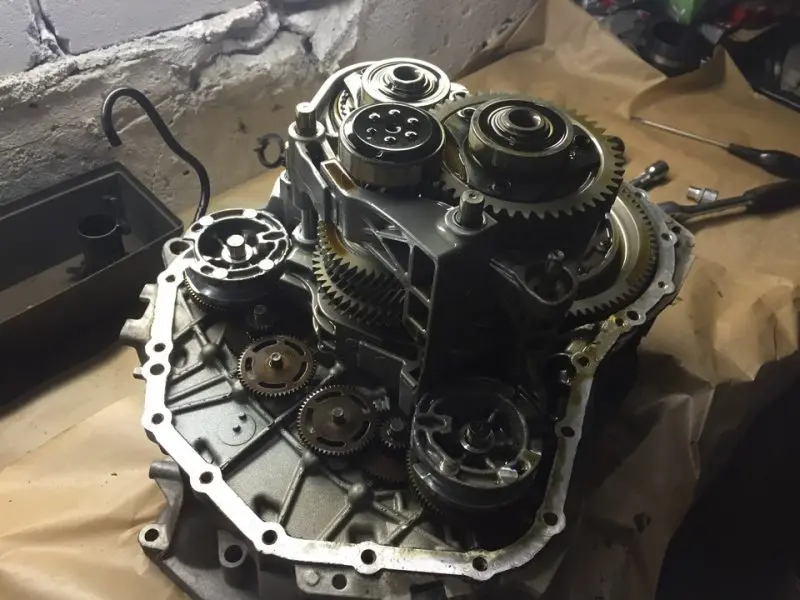
The preselective type Powershift robotic box fails for the following reasons:
- The clutch discs are badly worn out. This is one of the weakest points in such a drivetrain, as the discs are often not pressed against the friction surface as smoothly as the driver would. With critical wear of these parts, a whole series of gears can disappear (gears are connected to the shaft, and torque is not transmitted). If such a breakdown appears before the car has passed 100 thousand, one of the disks is replaced. In other cases, it is better to change the entire set After installing new discs, it is imperative to adapt the electronics in the box.
- Oil seals worn out prematurely. In this case, the grease ends up where it doesn't belong. The consequences depend on which part of the unit the oil got into. Such damage can be eliminated only by replacing damaged parts.
- Breakdown of electromagnetic drives (solenoids). This is another weak point in the Powershift robot design. Such a malfunction is not recorded by the control unit as an error, so the car can jerk, and the on-board system does not show any breakdown.
- Mechanical or software damage to the TCM. In many situations (depending on the nature of the breakdown), the device is flashed. In other cases, the block is changed to a new one and is stitched for a specific machine.
- Mechanical breakdowns (fork wedge, wear of bearings and gears) as a result of natural wear and tear, as well as failure of the electric motor. Such damage cannot be prevented, therefore, when they appear, the parts simply change.
- Malfunctions in the dual-mass flywheel (read more about them here). Usually, such a breakdown is accompanied by squeaks, knocks and unstable crankshaft revolutions. The flywheel is usually replaced with the clutch discs so as not to disassemble the unit at short intervals.
Powershift transmission tips
Despite the fact that serious damage to a Powershift robot can appear earlier than a mechanical analogue, in many cases such a transmission is quite reliable. But this is only possible if the vehicle is properly operated. Here are some tips for the proper operation of the considered manual transmission:
- Allow the engine to run before starting to move the vehicle after a standstill (especially in winter). This allows you to bring the power unit to the proper temperature regime (about what this parameter should be, read separately), but this procedure is more needed in order for the lubricant to warm up in the transmission. At subzero temperatures, the oil becomes thick, which is why it is not pumped so well through the system and the lubrication of gears and other elements is worse if a wet clutch is installed in the car.
- When the car comes to a stop, you need to unload the transmission. To do this, after a complete stop of the car, holding the brake pedal, the handbrake is activated, the lever on the selector is transferred to neutral (position N), the brake is released (the gears are disengaged), and then the gearshift knob is moved to the parking position (P). When performing this procedure, it is important to ensure that the parking brake is working properly.
- A sporty driving style and a robotic gearbox are incompatible concepts. In this mode, the clutch discs are sharply pressed against the flywheel, which leads to their accelerated wear. Therefore, those who do not like the "pensioner" driving style, it is better to bypass this transmission side.

- On unstable road surfaces (ice / snow), do not allow the drive wheels to slip. If the car is stuck, it is better to get out of the "trap" in manual mode and at low engine speeds.
- When the car gets stuck in a traffic jam or jam, it is better to switch to manual gear shifting. This will prevent frequent gear shifting, which will cause the basket to deplete more quickly. When accelerating in urban mode, it is better to press the pedal smoothly and avoid sudden acceleration, and also not to bring the engine to high revs.
- When using Select Shift mode, do not hold down the +/- key.
- If it takes more than two minutes to stop the car, it is better not to keep the brake pedal depressed, but to put the transmission into parking mode with the handbrake activated. In this mode, the box disengages the gears and clutch discs, which prevents prolonged operation of the actuators. Parking with the brake pedal depressed in D mode should be short-term, since in this case the electronics disconnects the clutch, but the clutches continue to work, which can lead to overheating of the mechanisms.
- You should not neglect the routine maintenance of the gearbox, as well as checking the level of lubricant in the crankcase.
Powershift advantages and disadvantages
So, we examined the features of the work of the Powershift preselective robotic box and its modifications. In theory, it seems that the unit should work efficiently and provide comfortable gear shifting. Let's consider what are the positive and negative sides of this development.
The advantages of the Powershift manual transmission include:
- The transfer of torque from the internal combustion engine to the driven shafts of the transmission occurs without a noticeable gap;
- The unit provides improved vehicle dynamics;
- The speeds are switched smoothly (depending on the degree of pressing the gas pedal and the wear of the lever structure of the actuators);
- Since the engine runs more smoothly, and the electronics determine the most efficient gear shifting depending on the load on the unit, the car consumes less fuel than an analogue equipped with a classic torque converter.
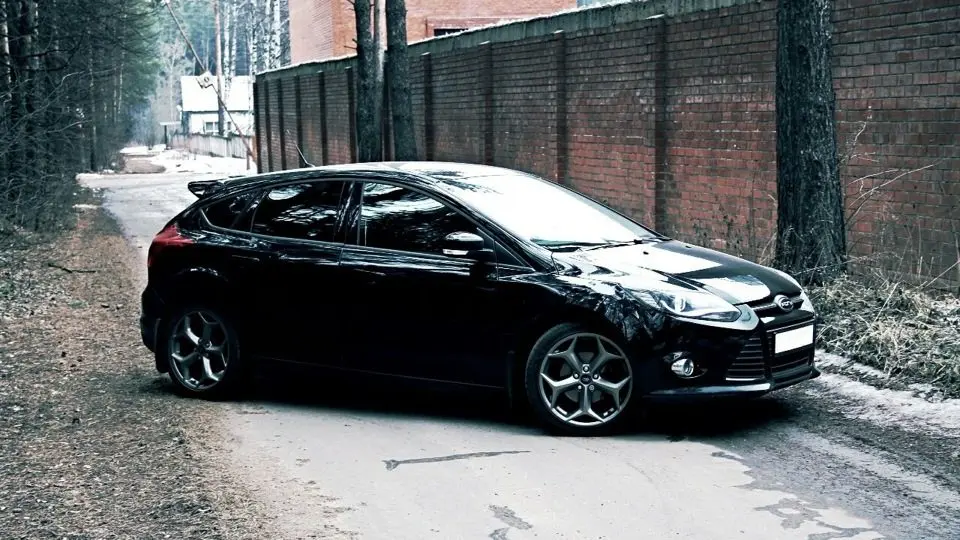
The disadvantages of the Powershift robot are as follows:
- Complex design, due to which the number of potential breakdown nodes increases;
- An additional planned oil change must be made (in addition to filling with new lubricant for the engine), and high requirements are imposed on its quality. In accordance with the manufacturer's recommendation, the scheduled maintenance of the box should be carried out a maximum of every 60 thousand. kilometers;
- The repair of the mechanism is complicated and expensive, and there are not so many specialists who understand such boxes. For this reason, it is impossible to carry out work on the maintenance of this manual transmission in a garage, and save on this.
- If the car is purchased on the secondary market (especially when buying at American auctions), you need to consider what generation the transmission is. In modifications up to the third generation, there were frequent failures in the operation of electronics, so such cars collected a large number of negative reviews.
In conclusion - a short video about common mistakes in the operation of robotic boxes:
Questions and answers:
How does the PowerShift box work? It has two main drive gears. Each has its own clutch. It has two input shafts (one for even, the other for odd gears).
How long does a PowerShift box take? It depends on the driving habits of the driver. Usually, replacement of the flywheel and clutch unit is required for 100-150 thousand km. mileage. The box itself is capable of leaving two such periods.
What's wrong with PowerShift? The robotic gearbox does not work as smoothly as the mechanics (the clutch often drops sharply - the electronics are not able to adjust this parameter). Because of this, the clutch wears out quickly.
